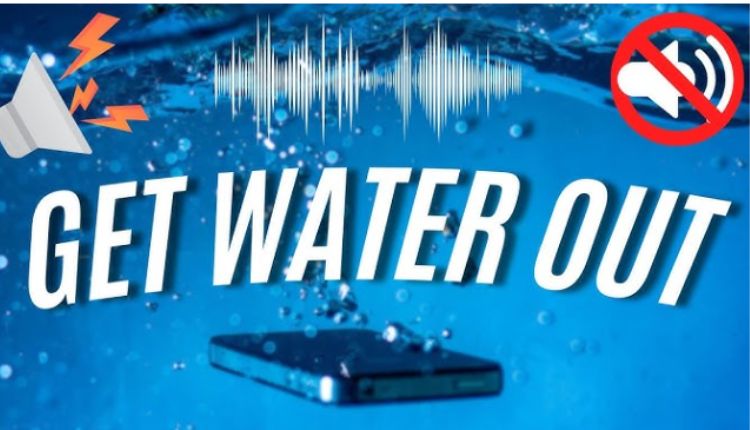Smartwatches and wireless earbuds. These systems utilize sound water eject waves to ensure efficient, safe removal of water from speakers, microphones, and other sensitive components. Read on to learn about the science of sound-based water ejection, its applications, and the potential direction for the future!
Say Goodbye to Sound Water Eject
At the heart of a sound water eject system is the principle of vibration and resonance. As sound passes through a medium (air, water, etc.), it vibrates. For electronic devices, audible frequencies and waveforms are purposefully generated and played through speakers, trembling and releasing the water droplets so they can be ejected from the device.
This process is guided by two important scientific principles:
Materials: The individual properties of the materials: construction timber, steel girders, glass, etc. By generating sound water eject waves that either match or amplify this frequency. Water molecules are forced into motion, making it easier to remove them.
Wipe Away the Water: Water droplets are held onto the surfaces by cohesion and adhesion. Sound waves rupture this tension, allowing water to adhere less to the internal parts of a device.
The majority of state-of-the-art sound-water ejection systems operate between 100 Hz and 10 kHz, and lower-frequency pulses are typically more successful at ejecting larger water droplets.
Sound Water Eject And Its Applications
There are many different applications of sound water eject in many different industries. This technology is used in several of the most widespread applications:
Consumer Electronics
As with several water-resistant smart devices, the moisture expulsion feature has now been added to many of the devices. Many popular smartwatches and wireless earbuds use particular low-frequency sounds to displace water from the speaker grill and microphone port after it get wet. Nylon immune elements—to guarantee clean sound quality and not decaying over time.
Automotive Industry
Today, cars with high-tech entertainment systems and voice-controlled assistants are susceptible to water intrusion. On a sound level, sound-based ejection solutions play a critical role in keeping speakers and microphones properly operating in devices such as convertibles, marine vehicles, and off-road vehicles that get splashed with rain.
Office and Laboratory Equipment and Supplies
Medical devices like hearing aids and diagnostic equipment should be kept moisture-free to work properly. Sound water eject is being explored as a non-destructive, non-invasive approach to keep sensitive components dry.
Industrial Machinery
Electronic Sensors and Communication Devices: Factories and manufacturing plants are frequently exposed to humid environments that could affect electronic sensors and communication devices. Automated sound-driven water ejection circuits help maintain functionality and extend the life of vital machinery.
Benefits of Sound Water Eject
Common examples of sound water eject removal methods include manual drying, compressed air and hydrophobic coatings. But sound-based water ejection is, in fact, advantageous for several reasons:
Non-Intrusive: Sound-water ejection does not require disassembly as manual drying does, so no need to open the device.
Faster and More Efficient: Sound waves get rid of water much more quickly than letting a device air dry.
Minimized risk of damage—Heat-based or compressed air methods can potentially cause damage to the electronic components of a device, compared to which controlled sound waves do not generate heat or pressure.
Automated and SIMPLE: Lots of the devices incorporate automated program triggers triggering sound-water ejecting, minimizing end users having to go ahead and take the following tap.
Challenges and Limitations Sound Water Eject
Although its useful, sound water eject is not a perfect solution and has limitations:
And more importantly, limited to certain devices: Although it works well with small electronic components, you cannot apply the same method to a bigger item, for example, a waterproof camera.
Tireless use of sound-based ejection, especially for portables, can quickly deplete battery life.
Performing on Different Liquids: It performs fine with clean drinking its performance may drop a bit with thick liquids like sugarwater and saltwater and can leave residues.
Innovations and Research For the Future Sound Water Eject
There are many systems to expel sound water eject that rely on sound, and researchers and tech companies are currently working to refine them. In the future, some exciting innovations might be:
Machine learning algorithms could modify sound-wave frequencies in real-time according to volume and liquid type.
Integration with Smart Assistants: In the future, users might be able to initiate water ejection merely through voice commands.
Nanocoatings and Sound Synergy: A synergy of hydrophobic nanocoatings with sound technology might bolster the sound water eject resistance of otherwise vulnerable devices.
Self-Cleaning Surfaces: Through ultrasonic waves, devices that may someday prevent not just water but also dust and debris from touching crucial parts.
Conclusion
The sound water eject is a novel and effective way to remove water for electronic equipment. Utilizing vibration and resonance mechanisms, manufacturers have produced a low-cost, non-invasive solution to water damage prevention. This system will likely grow far more advanced in the future with advances in technology as it transitions into various industries and applications. Thanks to the ability to clear water using sound waves, smartwatches and medical devices, to name just two examples, are changing in terms of durability and device maintenance.
